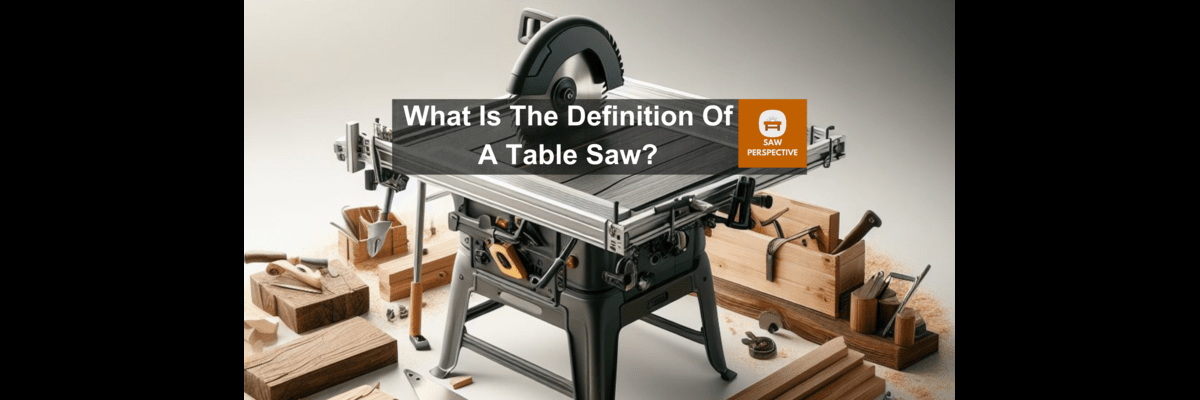A table saw is a versatile woodworking tool. It is used for cutting various materials, particularly wood. It allows for precision and ease. Explore the fascinating journey of table saws through history.
Trace their evolution and development over time. Discover the diverse array of table saw types available in the market today.
Additionally, the article emphasizes the importance of table saws in woodworking. It highlights their role in creating accurate and intricate cuts. Also,gain insight into common terminology associated with table saws.
It enhances their understanding of the tool. The article provides essential safety measures to consider before using table saws. It ensures users can operate them confidently and securely.
What Is The History And Evolution Of Table Saw?
The table saw was invented in 1777 by Samuel Miller in Southampton, England.
| Year | Evolution |
| 1777 | Invention of table saw in England |
| 1885 | Introduction of Hand Circular Rip Saw |
| 1922 | Invention of radial arm saw |
| 1950 | Table saw for home woodworkers |
| 1970 | Safety features were added |
| 1980 | Introduction of computer-controlled table saw |
| 1990 | Alignment tools for table saw |
| 2000 | Dust collection of table saw |
| 2010 | Soft-start motors in table saw |
What Are Types Of Table Saws?
- Cabinet Table Saw
- Contractor Table Saw
- Hybrid Table Saw
- Benchtop Table Saw
- Portable Table Saw
- Jobsite Table Saw
- Specially Table Saw
- Sliding Table Saw
- Mini Table Saw
- Compact Table Saw
- Worm-Drive Table Saw
What Is The Importance Of Table Saws In Woodworking?
- Table saws offer accurate and precise cuts. Well-fitted joints are crucial for creating and achieving desired dimensions in woodworking projects.
- They can handle a variety of cuts, including rip cuts, crosscuts, bevel cuts, and dado cuts. It makes them versatile tools.
- Many modern table saws come with safety features. Like blade guards and riving knives, enhancing the safety of woodworking operations.
- Table saws are essential for a wide range of woodworking projects. They are used for building furniture, crafting cabinetry, and creating intricate woodwork.
- Woodworkers can customize table saw setups and accessories. It can meet specific project requirements, enhancing flexibility in design and execution.
- With the right techniques, table saws enable woodworkers to achieve professional-level results.
What Is The Common Terminology In Table Saws?
- Rip Fence: A guide parallel to the saw blade, ensuring straight cuts by keeping the workpiece at a consistent distance during longitudinal (rip) cuts.
- Miter Gauge: A tool for making angled cuts, it slides in the miter slot and allows precise adjustments for accurate crosscuts and mitered angles.
- Dado Set: A specialized blade set used for cutting wider grooves (dados) in wood, commonly used for joinery and cabinetry.
- Kickback: Rapid and forceful backward movement of the workpiece towards the operator, typically caused by improper feeding or alignment, posing a safety risk.
- Zero-Clearance Insert: A replaceable throat plate with an opening just wide enough for the blade, reducing tear-out and providing better support for the workpiece.
- Bevel Cut: An angled cut made through the thickness of the workpiece, usually accomplished by tilting the saw blade.
- Riving Knife:A safety device mounted behind the saw blade, preventing kickback by keeping the workpiece from closing in on the back of the blade.
- Crosscut Sled: A sled-like device that slides in the miter slots, enabling safer and more accurate crosscuts, especially for smaller workpieces.
- Throat Plate: A removable plate surrounding the saw blade’s arbor, providing access for blade changes and supporting the workpiece during cuts.
- Dust Collection System: A mechanism to capture and remove sawdust generated during cutting, enhancing visibility, and maintaining a cleaner work environment.
What Safety Measures To Consider Before Using Table Saws?
Here’s a list of safety measures to consider before using table saws:
1. Read the manual
2. Wear appropriate personal protective equipment (PPE)
3. Inspect the saw and accessories
4. Ensure proper setup and calibration
5. Secure workpieces properly
6. Use a push stick or push block
7. Maintain a clean and organized workspace
8. Keep hands and body clear of the blade
9. Use a blade guard and splitter
10. Disconnect power when changing blades or making adjustments
11. Avoid distractions
12. Use proper feeding techniques
13. Keep the saw well-maintained
14. Be mindful of kickback
15. Follow proper lockout/tagout procedures

